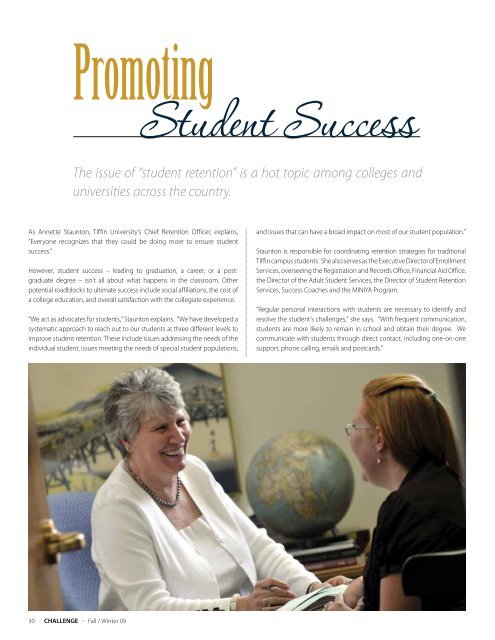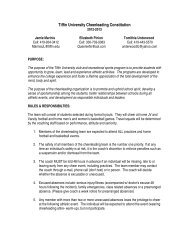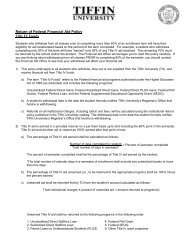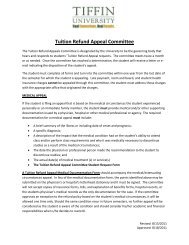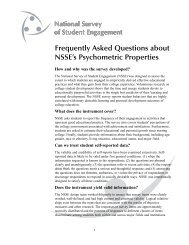Enrollment Increases 128% In Six Years - Tiffin University
Enrollment Increases 128% In Six Years - Tiffin University
Enrollment Increases 128% In Six Years - Tiffin University
You also want an ePaper? Increase the reach of your titles
YUMPU automatically turns print PDFs into web optimized ePapers that Google loves.
Promoting<br />
The issue of “student retention” is a hot topic among colleges and<br />
universities across the country.<br />
As Annette Staunton, <strong>Tiffin</strong> <strong>University</strong>’s Chief Retention Officer, explains,<br />
“Everyone recognizes that they could be doing more to ensure student<br />
success.”<br />
However, student success – leading to graduation, a career, or a postgraduate<br />
degree – isn’t all about what happens in the classroom. Other<br />
potential roadblocks to ultimate success include social affiliations, the cost of<br />
a college education, and overall satisfaction with the collegiate experience.<br />
“We act as advocates for students,” Staunton explains. “We have developed a<br />
systematic approach to reach out to our students at three different levels to<br />
improve student retention. These include issues addressing the needs of the<br />
individual student, issues meeting the needs of special student populations,<br />
30 CHALLENGE > Fall / Winter 09<br />
Student Success<br />
and issues that can have a broad impact on most of our student population.”<br />
Staunton is responsible for coordinating retention strategies for traditional<br />
<strong>Tiffin</strong> campus students. She also serves as the Executive Director of <strong>Enrollment</strong><br />
Services, overseeing the Registration and Records Office, Financial Aid Office,<br />
the Director of the Adult Student Services, the Director of Student Retention<br />
Services, Success Coaches and the MINIYA Program.<br />
“Regular personal interactions with students are necessary to identify and<br />
resolve the student’s challenges,” she says. “With frequent communication,<br />
students are more likely to remain in school and obtain their degree. We<br />
communicate with students through direct contact, including one-on-one<br />
support, phone calling, emails and postcards.”


